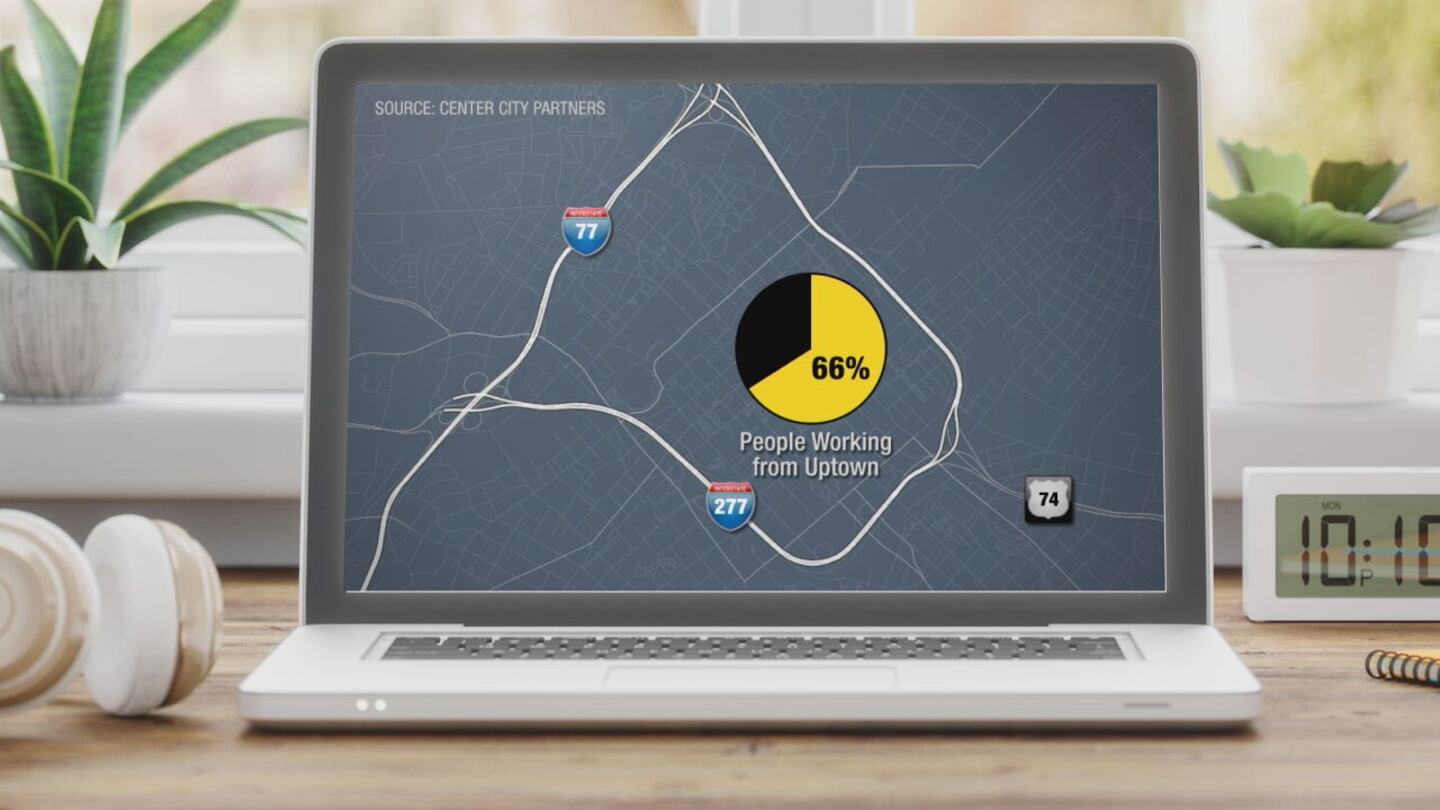CHARLOTTE — Large and small businesses are struggling with how to restore corporate culture and whether to keep paying for expensive office buildings as employees continue to work from home.
Channel 9′s Evan Donovan learned for the first time in decades, the American worker has some power – and some are using it to make their work-life balance more balanced.
“I think it’s made me a happier employee and a better mom,” said Bentley Kensinger, who now works fully from home as part of a marketing team for a billing and payment technology company.
Prior to the pandemic, Kensinger spent five days a week in the office. Kensinger said she and her team are more productive working remotely.
WEB EXTRA: Marketing team member explains benefits of WFH
She attributes some of that because of fewer distractions and chatter among employees.
“We talk for maybe two or three minutes on a Zoom to catch up and then get into the meat of the business,” Kensinger said.
Her manager set rules at the start of the pandemic. The team had to have cameras on during Zooms – a policy Kensinger backed.
“I don’t care what you look like,” said Kensinger. “You don’t have to put makeup on in the morning. I just want to be able to see you, so it’s like we are really together – working together on all of these things.”
The company also preferred employees to have a consistent location to work from.
“My spot’s very interesting,” Kensinger said.
Kensinger shares a small tailgate table as a workstation with her husband and they make it work.
The work-from-home phenomenon has now become fundamental for many companies and employees.
Global consulting firm McKinsey & Company McKinsey & Company found 58% of Americans can work from home at least one day a week, while 35% can be fully remote. The data were compiled as part of its American Opportunity Survey.
A study by Center City Partners in Charlotte found the frequency of people working from Uptown is still only 66% of pre-pandemic levels.
Centene pulls out
Centene Corp. announced in April it nixed plans for a University City regional headquarters. That left an 800,000-square-foot building and a 130-acre site, which is largely developed.
The decision by Centene to scale back on real estate in Charlotte and elsewhere was driven by employee preferences and learning how a company can operate in a work-from-home environment, the Charlotte Business Journal reported.
Taking another look at the workforce, workplace
“Employers have to be thinking very differently about the workforce, their workplace, how they’re attracting talent,” said Cheryl Richards, Ph.D., the CEO of Catapult, an employers’ association that helps its member companies navigate HR issues.
Catapult had issues of its own when it asked employees to come back into the office three days a week.
“And they were all sitting around a table with their laptops open on a Zoom screen, looking at the Brady Bunch of pictures on the screen, and trying to talk to colleagues, but also trying to be inclusive,” Richards said. “It didn’t work for us because of our geographic spread.”
WEB EXTRA: How companies can navigate options for employee’s working from home
So Catapult leaned into remote work – requiring just a few days a month in the office and downsizing from its space off West Arrowood Road in southwest Charlotte.
“We went from 26,000 square feet to about 5,000 square feet in our temporary space,” Richards said.
Richards said managers want to ensure it’s a good mix of employees and member businesses that utilize the space for training and meetings.
Advice for employers
In navigating this new hybrid work model, Richards had several pieces of advice for companies and employees. She said companies should listen more to employees by using tools, such as a survey.
Workers should be honest and respond with real feedback.
Managers should adapt those results to the organization’s needs and mission.
Employees should decide if those terms are acceptable to them, and both parties should be decisive.
Richards said the companies and employees struggling most are the ones unsure of what to do.
Those steps could help employers and employees decide whether to work from home and how much.
Many people may think it’s better to work from home, but experts Channel 9 spoke with said that’s not always the case.
Working from home may not work for everyone.
For example, young professionals in the early stages of their careers benefit more from working in the office when there are more experienced colleagues to learn from.
More people working from home
Between 2019 and 2021, the number of people primarily working from home tripled from 5.7% (roughly 9 million people) to 17.9% (27.6 million people), according to new 2021 American Community Survey (ACS) 1-year estimates released in September 2022 by the U.S. Census Bureau.
(WATCH BELOW: 9 Investigates: The link between how you dress, productivity while working from home)
©2023 Cox Media Group














